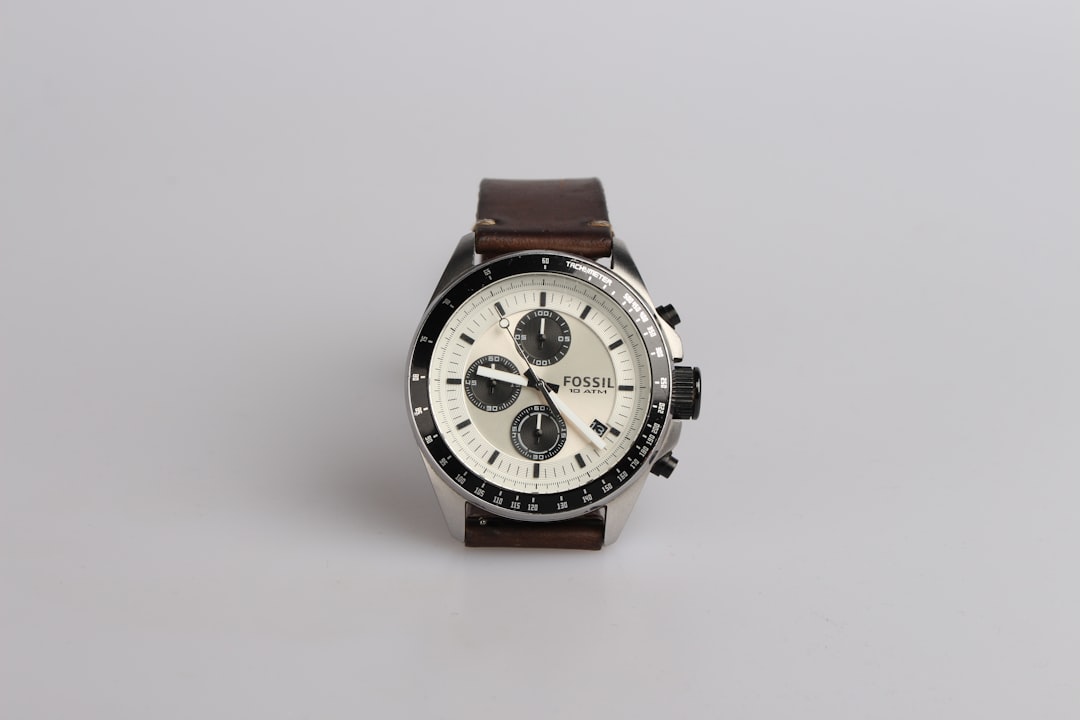The luxury market has always been a symbol of wealth, excess, and exclusivity. For decades, jet-setters, fashion icons, and high-end consumers have been willing to pay a premium for status symbols such as designer clothes, fine jewelry, and luxury cars. However, in recent years, we have seen a growing interest in a new symbol of wealth: cryptocurrencies.
Crypto has been steadily gaining mainstream acceptance and use in various industries, and the luxury market is no exception. More and more luxury brands are starting to accept cryptocurrencies as a mode of payment, and the rise of non-fungible tokens (NFTs) has introduced a new level of digital ownership to luxury assets. The aim of this post is to explore the intersection of crypto and the luxury industry, examining the current scenario and predicting the potential future trends.
Let’s delve deeper into this exciting and ever-evolving topic.
Crypto Meets High Fashion
The world of fashion has always been known for its exclusivity and high-end status symbols. In recent years, we have seen luxury fashion brands embrace cryptocurrency as a mode of payment, which has been a game-changer for the industry. Some of the biggest names in fashion have started accepting cryptocurrencies such as Bitcoin, Ethereum, and Litecoin as payment options.
One of the pioneers in this space is luxury retailer Louis Vuitton, which started accepting Bitcoin and other cryptocurrencies in 2019. The company created a blockchain-powered platform called AURA, which allows customers to authenticate their purchases and trace their histories from raw materials to the finished product.
Another brand that has embraced cryptocurrency is Burberry, which partnered with a blockchain-based platform called Vochain to authenticate its products and optimize its supply chain. With Vochain, customers can track their purchases and make sure that they are buying authentic Burberry products.
But why are luxury fashion brands embracing cryptocurrencies? Firstly, it provides an aura of exclusivity and novelty that these brands strive for. Secondly, it allows them to tap into a new market of younger, tech-savvy consumers who prefer to use cryptocurrencies over traditional payment methods.
Another benefit of accepting cryptocurrency as payment is the speed and security it offers. Transactions can be completed instantly without the need for intermediaries, which reduces the risk of fraud and chargebacks.
Overall, the acceptance of cryptocurrencies in the luxury fashion industry is a sign of its growing maturity and its recognition as a legitimate form of currency. As acceptance grows, it is expected that more luxury brands will embrace cryptocurrencies, and more customers will be willing to use them to purchase high-end products.
With Vochain, customers can track their purchases and make sure that they are buying authentic Burberry products.
Luxury Assets Go Digital:
The world of luxury has always been associated with physical assets such as jewelry, real estate, and artwork. However, with the rise of cryptocurrencies, luxury assets are going digital in the form of non-fungible tokens (NFTs).
NFTs are unique digital tokens that are stored on a blockchain, making them secure, traceable, and unchangeable. These tokens can represent any type of asset, digital or physical, such as artwork, music, videos, and even virtual real estate.
Luxury brands are taking notice of the potential of NFTs and are exploring ways to incorporate them into their business models. One example of this is the luxury fashion brand Gucci, which auctioned off a digital sneaker on the app Arianee for $12,599. The digital sneaker was a limited edition NFT, and the purchaser received a physical pair of sneakers as well.
But it’s not just fashion brands that are experimenting with NFTs. Luxury car brand Bugatti recently auctioned off an NFT of its one-of-a-kind Bugatti Baby II electric car for $230,000. The NFT included a digital render of the car, a physical model of the car, and, of course, the actual car itself.
Another interesting example is the sale of a digital artwork by Beeple for a staggering $69 million. The artwork, titled “Everydays: The First 5000 Days,” was sold as an NFT on the online auction house Christie’s.
The impact of NFTs on the luxury market has been significant. They offer a new way for luxury brands to engage with customers and generate revenue. Additionally, NFTs provide owners with proof of ownership and authenticity, which is crucial in the luxury market where counterfeiting is a major problem.
As NFTs become more mainstream, it’s likely that we’ll see more luxury assets converted to NFTs, and more brands exploring ways to incorporate them into their business models. The potential for NFTs in the luxury market is significant, and it’s an exciting time for the intersection of luxury and digital assets.
Crypto Art as a New Asset Class
The world of art has always been a lucrative market for investors and collectors, but with the rise of cryptocurrencies, a new art market has emerged. Crypto art, also known as blockchain art, is digital artwork that is sold with the help of blockchain technology. This method of transaction has become increasingly popular in recent years, especially in the luxury industry.
One of the significant benefits of crypto art is that it provides artists with greater control over their work as they can protect their art and maintain the right to it digitally. Moreover, artists can prove the authenticity of their digital artwork by creating it as an NFT that is secured by the blockchain. This system ensures that each artwork is a unique and one-of-a-kind piece that cannot be reproduced, making it highly valuable.
Crypto art is becoming an emerging asset class in the luxury market, as it provides investors with a unique opportunity to invest in limited edition artworks that are authenticated digitally. One of the earliest examples of a crypto art sale is Beeple’s digital artwork, “Everydays: The First 5000 Days,” which sold at an auction for $69 million in March 2021.
Blockchain technology has also revolutionized the transparency of the art market. With blockchain, buyers can easily track the provenance and history of the artwork they’re purchasing, from the artist to each buyer. This technology provides a level of transparency that the traditional art market lacks, making it easier to identify and mitigate fraudulent transactions.
In conclusion, the rise of crypto art as an emerging asset class is a significant development in the luxury industry. With the help of blockchain technology, artists can secure their work digitally, and buyers can invest in one-of-a-kind artworks with added transparency and authenticity. As cryptocurrencies continue to gain popularity, it’s no surprise that crypto art is becoming a valuable asset class in the world of luxury.
Crypto art is becoming an emerging asset class in the luxury market, as it provides investors with a unique opportunity to invest in limited edition artworks that are authenticated digitally.
Blockchain for Authenticity and Transparency:
Blockchain technology has rapidly emerged as a powerful tool for ensuring authenticity and transparency in the luxury market. Blockchain, essentially a decentralized digital ledger, provides a secure and transparent way of recording transactions and interactions between parties. The technology achieves this by creating an unmodifiable record, which is then distributed across a network of nodes, making it practically impossible for any one party to tamper with it.
Luxury brands are increasingly adopting blockchain technology to ensure authenticity of their products. In the past, forgery and counterfeiting have been a significant challenge to the luxury industry, resulting in the loss of billions of dollars annually. However, blockchain technology is transforming this reality by providing a way to track the movement of products from the manufacturer to the end-user in real-time, creating a permanent audit trail.
Blockchain technology also facilitates transparency in the luxury market. It allows customers to trace the origin of products, their authenticity, and quality. For example, a customer can scan a QR code on a luxury product, which records its entire lifecycle from the manufacturer to the retailer, enabling the customer to verify its authenticity.
In addition, blockchain technology enhances supply chain management and product tracking. It enables luxury brands to monitor the movement of their products, thereby creating a system of accountability that ensures manufacturers and distributors adhere to production and supply chain standards. Through blockchain technology, luxury brands can verify the source of raw materials, including precious metals and gems, ensuring that they are ethically sourced and not obtained from conflict zones.
Blockchain technology is also fostering greater trust among luxury brands and their customers by reducing the need for intermediaries such as banks, insurers, and lawyers. By using blockchain technology to automate and execute transactions, luxury brands greatly reduce the risk of fraud as blockchain transactions are transparent, secure, and tamper-proof.
In summary, blockchain technology is transforming the luxury industry by providing a secure, transparent, and tamper-proof platform that facilitates transactions, supply chain management, and product tracking. Luxury brands that adopt blockchain technology are positioning themselves to achieve unparalleled levels of authenticity, transparency, and accountability, thereby enhancing customer trust and loyalty.
However, blockchain technology is transforming this reality by providing a way to track the movement of products from the manufacturer to the end-user in real-time, creating a permanent audit trail.
The Future of Crypto in Luxury
As the use of cryptocurrencies continues to gain acceptance in the luxury industry, it is important to examine their potential in shaping the future of the industry. From creating new asset classes such as crypto art to using blockchain technology for improving transparency and authenticity, cryptocurrencies have the potential to revolutionize the luxury market in ways we have not even seen yet.
One of the major advantages of cryptocurrencies in the luxury industry is the potential to eliminate the middleman in transactions. By using cryptocurrencies, luxury brands can directly receive payments from customers without having to go through traditional financial institutions. This not only speeds up the transaction process but also reduces fees and ensures the security of transactions.
Another potential use of cryptocurrencies in the luxury market is the creation of loyalty programs that offer customers exclusive access to limited products or experiences. By using blockchain technology, luxury brands can create immutable and transparent records of loyalty points earned by customers, making them more valuable in the eyes of customers.
In addition, cryptocurrency could also play a significant role in the resale market for luxury items. Companies such as The RealReal are already accepting Bitcoin for high-end luxury items, and it is not hard to imagine a future where cryptocurrencies are the primary accepted form of payment in the resale market.
As the crypto market continues to mature and gain wider acceptance, it is likely that we will see a growing trend of luxury brands embracing and even creating their own cryptocurrencies. By doing so, they can establish a greater sense of loyalty and exclusivity among their customers while also remaining at the forefront of the latest financial technology.
So, what do the experts predict for the future of cryptocurrencies in the luxury industry? Many believe that blockchain technology will become increasingly prevalent in the luxury market as it offers a secure and transparent method for tracking a product’s origin, authenticity, and ownership. Additionally, some pioneers in the industry predict that cryptocurrencies will expand beyond digital investments and will be integrated into the physical luxury market.
In conclusion, the rise of cryptocurrencies in the luxury industry shows no sign of slowing down. As luxury brands and customers increasingly recognize the benefits of using digital currencies, we can expect to see more creative uses of cryptocurrencies in the luxury market. The potential of crypto to revolutionize the luxury industry is vast and exciting, and we are sure to see even more fascinating developments in the near future.
By doing so, they can establish a greater sense of loyalty and exclusivity among their customers while also remaining at the forefront of the latest financial technology.
Conclusion
In conclusion, the rise of cryptocurrencies in the luxury industry is a trend that cannot be ignored. We have discussed how luxury fashion brands have embraced digital currencies as a mode of payment, the impact of NFTs on the luxury market, and the emergence of crypto art as an asset class.
Furthermore, we explored the role of blockchain technology in ensuring authenticity and transparency in the luxury market. The benefits of using blockchain for luxury brands and customers cannot be overstated. It eliminates the risk of counterfeit items and ensures that the customers are getting value for their money.
As we look to the future, it is evident that cryptocurrencies will play a significant role in the luxury industry. With more luxury brands embracing digital currencies, we can expect to see an increased demand for luxury assets in the form of NFTs.
In summary, the intersection of crypto and the luxury market is an exciting development, and one that presents a lot of opportunities for both luxury brands and customers alike. It is a trend that is likely to continue to grow in the years to come, and we should all be paying attention.





